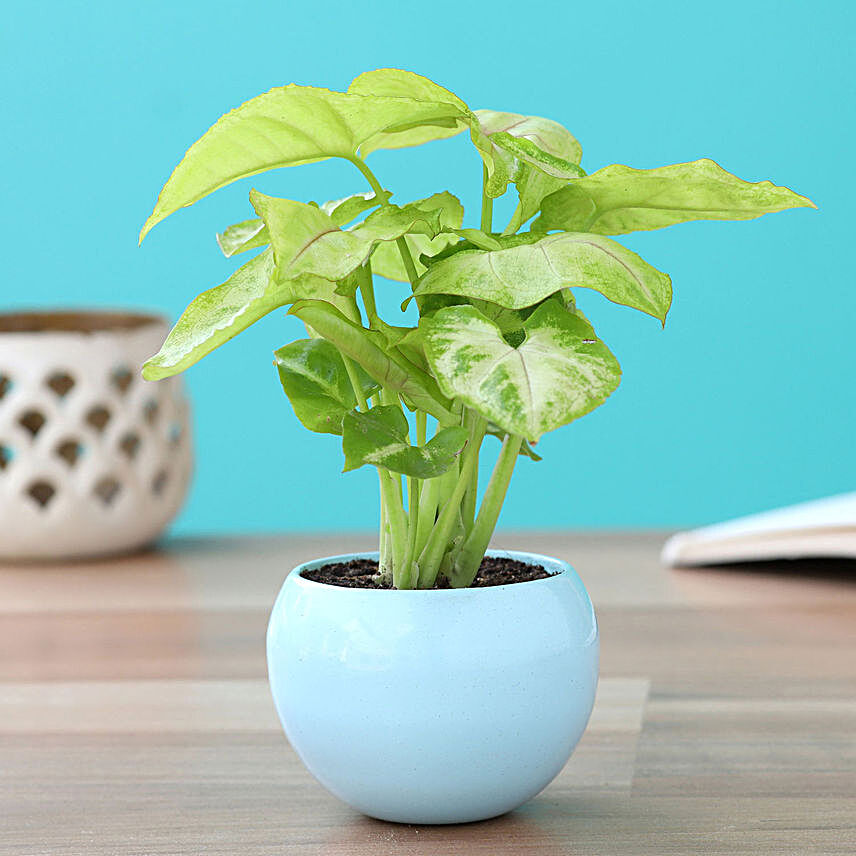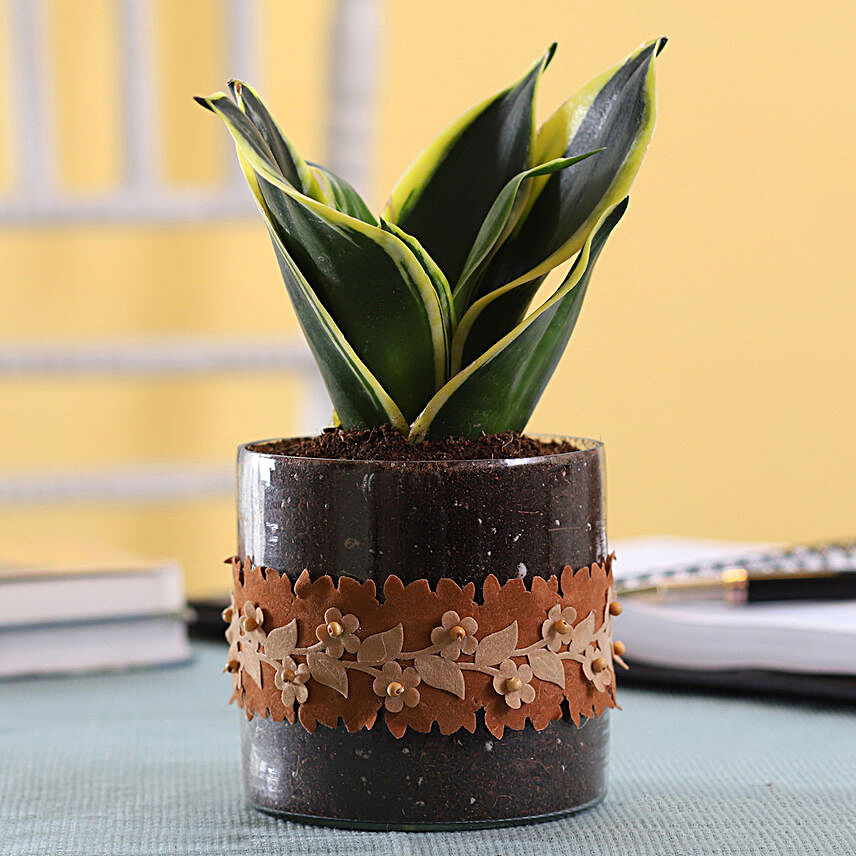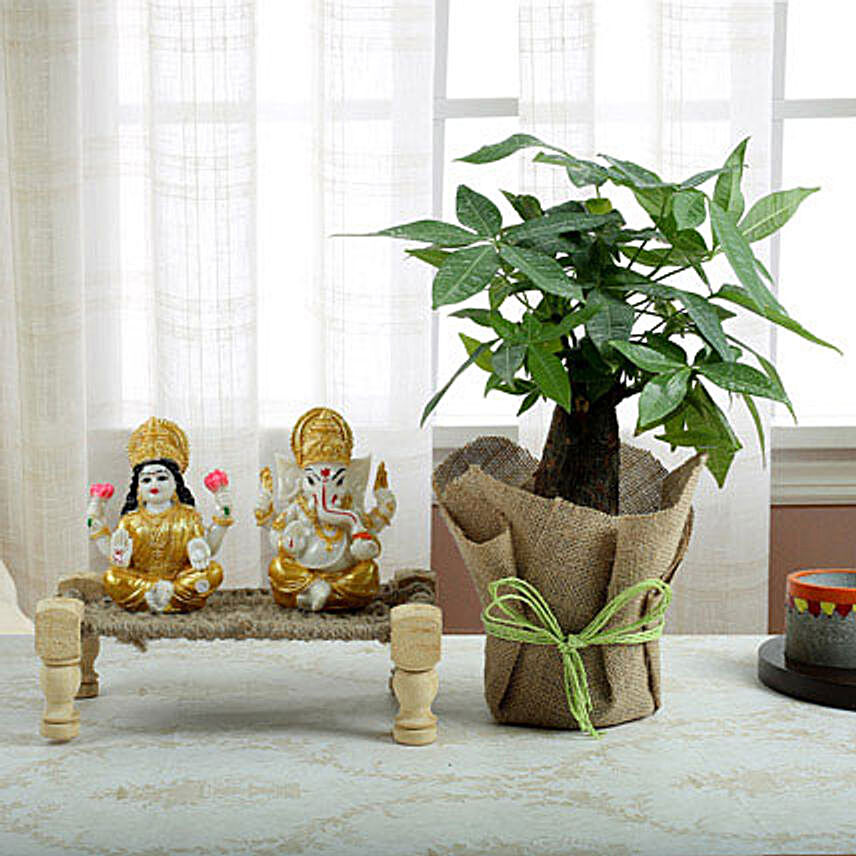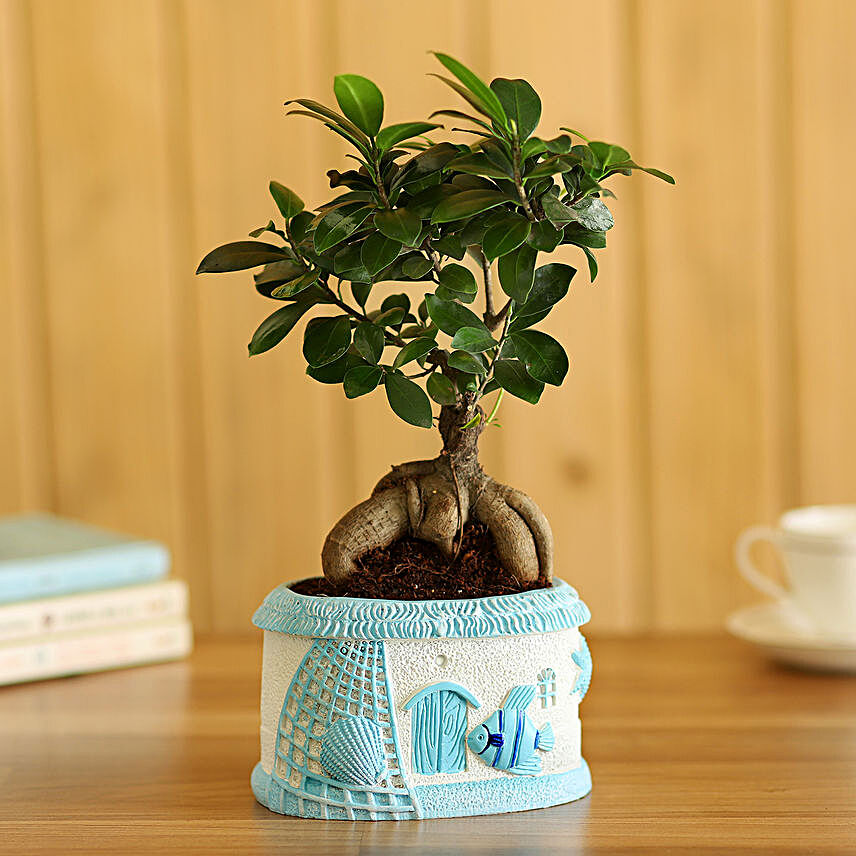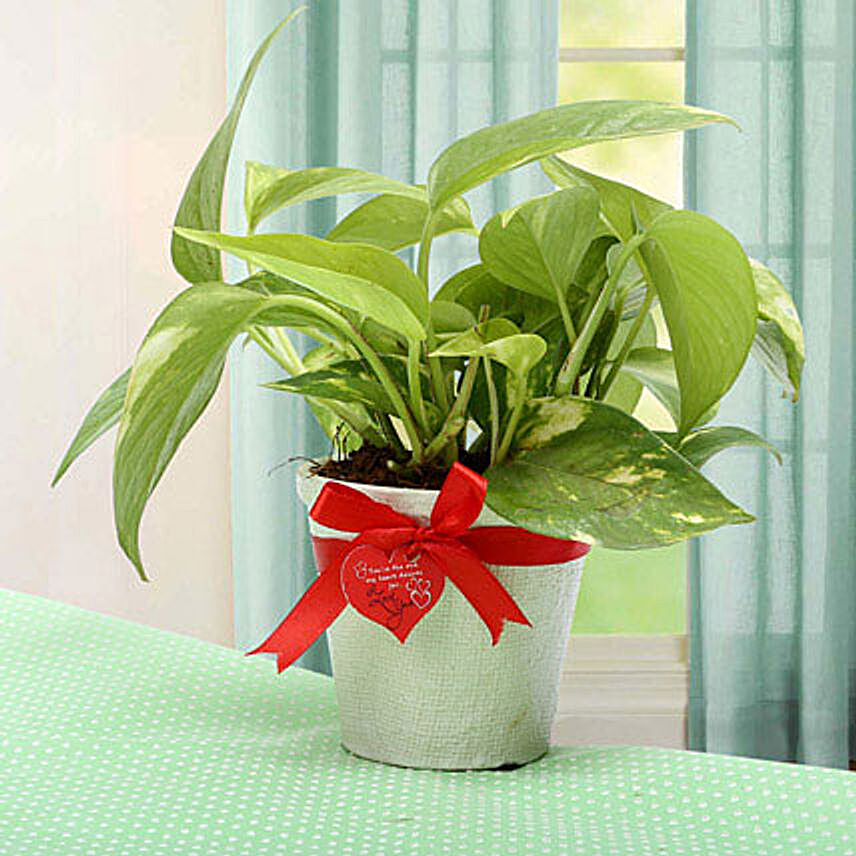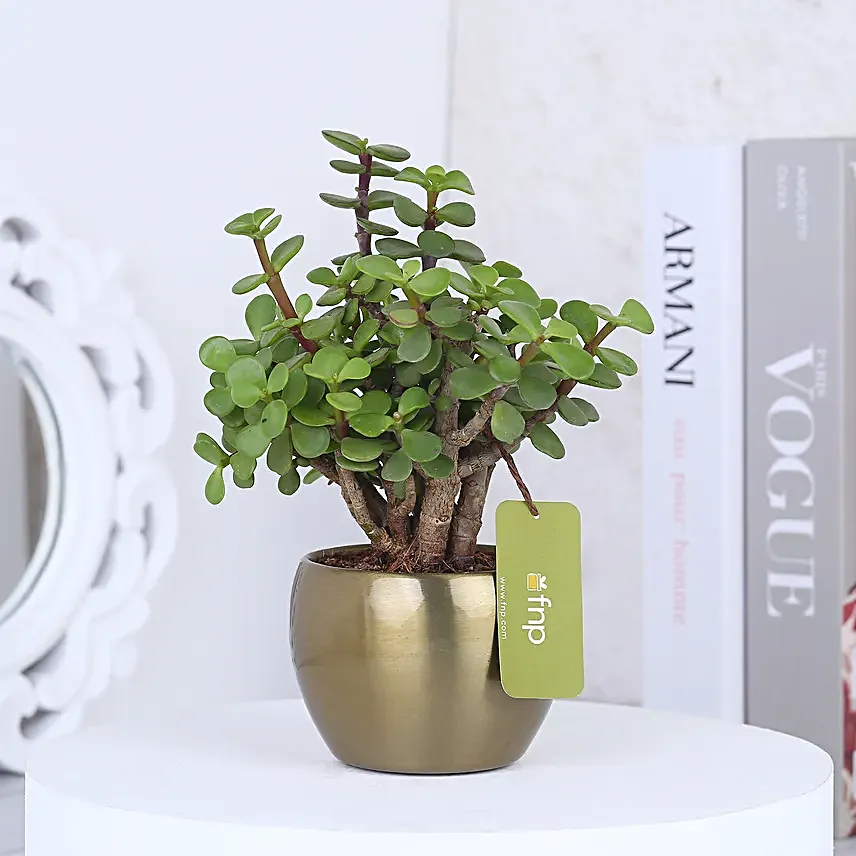Do You Know Which Plants Release Oxygen At Night?
- Author: Anushka Published: 06th May, 2024
Plants release oxygen during the day in the presence of natural light through the process of photosynthesis. While at night, the plants uptake oxygen and release carbon dioxide, which is called respiration. However, some plants can uptake carbon dioxide during the night as well because of their ability to perform a type of photosynthesis called Crassulacean Acid Metabolism (CAM).

Having these plants at home improves air quality throughout the day and helps people sleep better at night. Read further to know about plants that release oxygen at night. Adding them to the home will boost the air quality and oxygen levels and fill it with greenery.
- Areca Palm - One of the best plants to keep indoors. Being native to dense tropical forests, it can very well survive in areas with less sunlight. This plant absorbs all kinds of harmful gases like formaldehyde and benzene and keeps the air humid. It is preferably ideal for those who suffer from sinus problems. The ability of this plant to release oxygen at night helps improve breathing patterns and lets people sleep better at night.
- Snake Plant - Also known as Mother-in-law’s Tongue and Sansevieria, the snake plant is another popular indoor plant that emits oxygen at night. It helps remove formaldehyde from the air. Adding it to the home allows people to breathe in a healthy environment, even during the night. It is easy to care for and grow well in a spot that only has indirect light. Regular watering is not required as it does fine in dry soil.
- Tulsi - Tulsi is another name in the list of plants that give out oxygen at night. The leaves of tulsi emit a characteristic scent that can soothe nerves and help reduce anxiety. Having a tulsi plant in the home, balcony or near the window allows one to sleep better at night. Consuming the leaves of the tulsi plant has several benefits, such as curing fever, and common cold, and sharpening memory.
- Aloe Vera - Aloe vera is a succulent that grows slowly and has flashy spear-like leaves. The perfect cure to almost every skin problem, aloe vera releases plenty of oxygen at night that purifies the air and helps people sleep better at night. It removes two harmful chemicals from the air- formaldehyde & benzene. It doesn’t need to be watered very often and dry conditions are best for its growth. One should let the soil of aloe vera dry out completely between watering.
- Peace Lily - One of the amazing air cleaners as studied by NASA, Peace Lily releases oxygen at night. It is one of the best plants that purify all volatile organic compounds in the air, like benzene, formaldehyde, toluene, carbon monoxide, and xylene. The peace lily is known to increase room humidity by up to 5%, which is great for breathing while sleeping. It requires medium, indirect light to grow well and should only be watered when the soil is dry.
- Spider Plant - The plant is named so because of the shape of the leaves that look similar to that of the spider’s legs. It helps add more oxygen and filter out harmful volatile compounds like benzene, formaldehyde, and carbon monoxide which allow people to breathe easier in the evening. The well-drained soil and bright, indirect light help the spider plant grow well. Make sure to not over-water the plant to avoid root rot.
Bringing these highest oxygen-producing plants home will make a huge difference and is guaranteed to resolve the air quality problem to a great extent. While these plants beat all when it comes to providing oxygen at night, certain green companions release OXYGEN 24 HOURS. Get yourself acquainted with them below -
- Orchids - One of the popular indoor and flowering plants that give oxygen 24 hours is Orchids. In addition to releasing oxygen at night, this flower eliminates xylene pollutants found in paint and turns the air fresh and pure. Given these compelling reasons, this pretty and rare plant makes a nice housewarming gift as well.
-
Christmas Cactus - Though it is a seasonal flowering
plant, Christmas Cactus is a preferred houseplant for it gives oxygen
24 hours. It is a popular purchased plant online to maintain the fresh
air indoors. Since it is adapted to low light conditions, you can
place it in any corner of your house without any second thoughts. More
so, its long green flowery arms will beautify your home like no
other.
-
Tulsi - Though Tulsi has been talked about already,
it’s so powerful that we couldn’t help but give it a
special mention again. Every day, Tulsi gives out oxygen for about 20
out of the 24 hours a day. It absorbs toxic pollutants from the air
such as carbon dioxide, carbon monoxide and sulphur dioxide.
Furthermore, apart from being an excellent source of oxygen, it also
offers several health benefits including curing a headache, common
cold and stomach discomfort.
- Lucky Bamboo - The bamboo plant is one of the most versatile and fastest oxygen-producing plants when it comes to purification. The plant has been utilised for many years in a variety of ways to eliminate toxins from the air, water and even our skin. Additionally, since lucky bamboo can survive in both bright and dim environments, these plants are ideal to include in your home decor.
-
Pothos - The next one on our list of the fastest
oxygen-producing indoor plants is the pothos (Devil’s Ivy). As
per the latest research conducted by NASA, the pothos (money) plant
shows a rapid increase in the levels of oxygen in indoor settings. But
apart from their qualities, these plants also have cute looks, which
makes them a perfect fit for your homes and office settings.
-
Ficus - Popularly known as the weeping fig, Ficus is
a shrub with thick green leaves that speedily purifies the air. It is
a typical houseplant that has received NASA recognition for its
ability to effectively remove airborne formaldehyde, xylene and
toluene. So, if you are looking for both speed and efficiency, weeping
fig is the one for you!
- Gerbera Daisy - Undoubtedly the prettiest plant on the list, the Gerbera daisy is a flowering plant that contains more than just colour and looks. Since they create oxygen 24 hours a day, you won’t feel fatigued around these plants. It is one of the highest oxygen-producing indoor plants which also shows its magic at night. And unlike the other selections on the list, the plant is just perfect to make your indoor settings look more colourful, attractive and wholesome.
So, these were some of the toppers that provide oxygen during night and day to the environment. Since these indoor plants offer us so much beauty and clean air, let's return the favour with a little TLC. Check out the section below for simple tips that will work wonders and keep your plant friends thriving -
Keeping Your Plant Pals Happy: Simple Tips for Indoor Greenery
Indoor plants add a touch of life and beauty to our homes, but keeping them thriving can sometimes feel daunting. But worry not as these basic care tips will ensure your plant friends stay happy and healthy -
Bright Sunlight: Plants, like us, also need sunlight! Most indoor plants prefer bright, indirect sunlight. Avoid the harsh midday sun, which can scorch leaves.
Watering Wisdom: Overwatering is a common issue for plant woes. Stick your finger in the soil and if the top inch feels dry, it's watering time! Since different plants have different needs, so research your specific variety for watering frequency.
Power Planter: Plants need room to grow! If your plant seems cramped, repot it into a container slightly larger than the current one. Good drainage is important, so also make sure your pot has drainage holes.
Food for Thought: Plants need nutrients too! Feed them a balanced fertiliser once a month during the growing season (usually spring and summer).
By following these simple steps, you can create a flourishing indoor jungle and enjoy the company of your leafy companions for years to come. Besides, if you are thinking of adding a little greenery to boost your air quality and O₂ levels, order these plants today.
